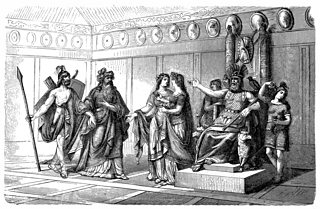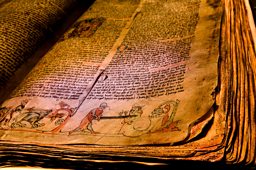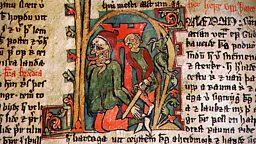The Ring? It's a bit of a saga...

One of the backgrounds to Wagner’s Ring cycle, writes Radio 3 Controller Alan Davey, are the stories of heroes and gods that are told in some of the great literary works written in medieval Iceland – a small country of still evolving terrain and dark winter nights that perhaps lend itself to lengthy storytelling.
My own fascination with the extreme North began when at university and I discovered the great Sagas of Iceland. Iceland is a nation with a great literary heritage which literally is based in the soil. From around the 10th century are the great Poetic Eddas: mythological and heroic poems that tell of the Gods – Oðin, Loki and also heroes such as Sigurd the dragon slayer and so on – all stories on which Wagner drew for his Ring cycle.

The mythology contained in these poems was brought together by a priest in 12th century Iceland called Snorri Sturlusson in his Prose Edda. The stories of heroes were brought together in later prose retellings, of which Volsunga Saga – the Saga of the Volsungs – is one, and one that Wagner was aware of. Then there are the Scaldic poems – complex and compact works that use mythological images to convey emotion and thought; the medieval poet Egil Skallagrimsson uses this style in his great poem Sonnatorrek, on the death of his son.
But the backbone of Icelandic literature, the so called "Family Sagas", is different. Laconic in style, they tell of people who lived in real places, and who quarrelled and feuded and killed one another for reasons that might be personal, legal or to do with relationships – always rooted in real places in Iceland you can visit today. The greatest of these sagas is Njals Saga – the story of a good man who tries to maintain his moral centre in a world where others kill and feud, which ends with he and his wife being burned alive in their farmhouse. But read the text and there is no emotion, only understatement, with the story told clearly and unflinchingly.
My favourite is Laxdæla Saga, a story which revolves around strong women and fighting men – the two main characters, Kjartan, every inch the blonde warrior who is killed due to some complicated machinations around the magnificent Guðrun, who, when as a matriarch looking back on her life comments to her son, Þeim var ek verst, er ek unna mest – "I was worst to the one I loved the most." That's it in terms of summing up the emotions – a whole world of pain and life of regret is summarised in that one sentence.

As a student I ended up editing a saga called Gautreks Saga, a later work that combines the supposed history in Sweden of a community who are so poor that the eldest commit suicide every time a guest arrives – reflecting ancient traditions of hospitality, with a story of a man who gets on by being generous and giving gifts.
And these brilliant stories are told in one of the most beautiful languages in the word, Icelandic. The old language is still recognisably the language people speak in Iceland today. It is a Scandinavian language with an earthy, animated burr to it. If you want to hear it, listen to Icelandic musician Ásgeir's album Ðyrð í Dauðaþögn (literally "Glory in the silence of death"). An English language version was made with the words translated by John Grant called "In the Silence". You can hear the beauty of the language, and in the words, written by his 70-year-old father, you sense a link back to the great Icelandic Viking literary tradition, as in the song Hlòða Nótt (with a hard to translate first line of the last chorus):
Sum var gott en annað fylgi með. Reisir sverð og skjöld (Some was good and wrapped with the other [ie bad] Raise your sword and shield.)
This is the spirit of a lot of later storytelling – from Wagner’s Ring to Game of Thrones. So join Radio 3 and hear Wagner’s version of the dark spirit of the North...
Alan Davey writes further about the Ring sagas in the 19 February issue of the .
-
![]()
Drama on 3: The Last of the Volsungs
Listen to The Last of the Volsungs, based on part of the 13th-century Icelandic Volsunga Saga. It falls within the heroic tradition and it has been the inspiration for many – William Morris, Tolkien and of course Wagner.

-
![]()
The view from the podium...
Watch as Sir Antonio Pappano introduces The Ring for Radio 3 listeners.
-
![]()
Opera on 3 – Der Ring des Nibelungen
All four Ring operas, conducted by Antonio Pappano, are brought together here for boxset listening.
-
![]()
"Put down everything and immerse yourself!"
Everything you need to know to enjoy Wagner's Der Ring des Nibelungen on Radio 3.
-
![]()
Six ways you learned about Wagner's Ring Cycle without even noticing
Your guide to how Wagner’s Ring Cycle has left an indelible mark on Western culture.





